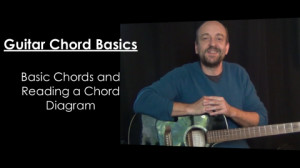
Guitar Chord Basics and Reading a Chord Diagram
Learn how chords are constructed and named and how to read a guitar chord diagram
Guitar Chords - Reading a Chord Diagram
Lesson Info
Difficulty: You might want to watch this a couple times
Lesson Length: 18:34
Instructor: George Goodman
Concepts
* How chords are named, constructed and notated
* Two note, three note, four note chords and beyond
* Chord quality
* Stacking thirds
* Reading a guitar chord diagram
* Learning to play the chords in the key of C
Help File
Gear Used
Takamine EG541SC
I am playing my black tak in this one.
This is a Takamine G Series EG541SC bought in North Carolina when I was playing in a band called Double Take.
Specs:
Top - Solid Spruce
Back - Nato
Sides - Nato
Finger Board - Rosewood
Electronics - TK40
Finish - Gloss Black
Check out more Takamine G Series Guitars
What's in a Chord?
What Is A Chord
A chord occurs when 2 or more notes of different pitch are sounded at the same time.
Power chords are common chords in rock music and are made up of two notes, the root note and the fifth. In this lesson we will mainly be dealing with three note triads, and four note seventh chords.
Chords are named or classified by their root note, their quality and any extensions beyond a triad.
Examples of quality include major (M, maj), minor (m, min), augmented (+, aug) and diminished (-, dim).
Major Chord
A major chord has a happy or joyful quality. The common way to notate a major chord is with a capital M.
If the chord is a simple major triad, then the M is not required.
C major is written simply as C while C major 7 is written as CM7.
Minor Chord
Minor chords have a melancholy sound. They are notated with a lower case m.
C minor is written as Cm or Cmin.
Augmented and Diminished Chords
Augmented and diminished are not as common and have their own unique sounds that are harder to put into words.
I would say that a diminished chord has an eerie sound where the augmented is more spacey sounding.
Diminished chords are notated with a minus sign or dim. C diminished is C- or Cdim.
Augmented chords are written with a plus sign or the word aug. C augmented is C+ or C aug.
There are also other ways of notating chord quality that should be self-explanatory.
The reason we get different quality chords is due to the intervals between the notes in the chords.
For example, the difference between major and minor chords is that the third is a half step lower in the minor chord.
Stacking Thirds
Chords are created by a process called stacking thirds.
Let’s look at the key of C as an example.
The key of C is made up of the following notes: C D E F G A B C
The first note is C. That’s 1.
The second note is D. That’s 2 and a major second above C.
The third note is E. That’s 3 and is a major third above C.
The fourth note of the C scale is F. This is a perfect fourth above C.
G is the fifth note and is a perfect fifth above C.
A is the sixth note and is a major sixth above C.
B is the seventh note and is a major seventh above C.
The C major chord is created by stacking thirds where you skip every other note. So starting with C, skip D and use E, skip F and use G.
The C major triad consists of the notes C, E and G.
We can continue stacking thirds so skip A and add B resulting in a CM7 chord. B being the major 7th of the chord. That’s the extension.
This could continue by adding D (skip C) to the chord forming CM9, C major 9.
So when we stack thirds starting on 1, we get major and major 7 chords, in this case C major and CM7. Those are the chords built off of 1.
Let’s look at building chords on 2, the second degree of our key, or in this case, D.
Starting with D as the root of the chord and stacking thirds D E F G A forms the D minor chord. Continuing stacking thirds forms Dm7 consisting of D F A C.
This is a minor chord because the interval between D and F is a minor 3rd.
3 – Stacking thirds starting on the third note of the key in this case with E creates Em and Em7 chords E G B and D
4 – Stacking thirds starting on the fourth note of the key gives Major and Major 7 chords
F Major: F A C and FM7: F A C E
5 – Stacking thirds starting on the fifth note leads to Major and Dominant 7th chords.
G Major: G B D and G7: G B D F. Note that this is not GM7. Instead this is G7 or G dominant 7.
The difference between the two chords is the interval between the root of the chord and the 7th. In the case of GM7, the interval between the root G and the 7th, F#, is a major 7th. For G7, the interval between the root, G and the 7th, F, is a minor 7th.
6 – Stacking thirds starting on the sixth note creates a minor or a minor 7th chord
Am: A C E and Am7: A C E G
7 – Stacking thirds starting on the seventh note forms a diminished triad or a half diminished 7th chord.
Bdim: B D F and Bø7 (half dim 7): B D F A
Ok, so I’ve just talked about intervals like major and minor 3rds, perfect fourths and fifths, minor sevenths. If this is all new information to you and you need to get to the bottom of all this right away, then watch the Music Theory for Guitar and Harmonica lesson. Otherwise, just take in this new information for now and let it serve as a precursor of info to come.
Because right now we want to be focused on learning some guitar chords.
Reading a Chord Diagram
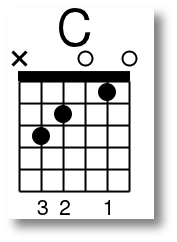 A chord diagram is a representation of the fingers, frets and strings to play on the fretboard of a guitar. Looking at a chord diagram is similar to looking down at the neck of your guitar.
A chord diagram is a representation of the fingers, frets and strings to play on the fretboard of a guitar. Looking at a chord diagram is similar to looking down at the neck of your guitar.
The darkened bar across the top of the diagram represents the nut. Every parallel line below the nut represents a fret.
The lines going up and down represent strings. The line on the left side represents the 6th string, the line on the right, the 1st string and the lines in the middle representing the corresponding strings.
The ‘x’s and ‘o’s above the nut signify whether to not play (‘x’) the string below or to play the string open (‘o’). For example, in the diagram for C, there is an ‘x’ above the 6th string. This means that when you strum the chord, you shouldn’t play the 6th string. The ‘o’s above the 3rd and 1st strings mean that you play these strings open (no fingers fretting these strings) when you strum the chord.
The numbers at the bottom of the chord diagram show which finger to use on which string. Again with the C chord:
First finger, first fret, second string.
Second finger, second fret, fourth string.
Third finger, third fret, fifth string.
Tips To Good Sounding Chords
Arch your fingers and use the tips of your fingers to press down on the fretboard. You want to prevent any finger from muffling an adjacent string.
Place your fingers as close to the fret as possible. The notes are easier to sound and you won't need to press as hard the closer they are to the fret.
When learning a new chord, play each string individually to ensure that each note rings clearly.
Not that any chord is more important than any others but the chords that are of most interest to us in this course are the chords in the key of C since we are using a C harmonica. These chords will be discussed in more detail later as well as their underlying scales but here they are now – C, Dm, Em, F, G, Am and Bdim.

Also of particular interest to us are the blues chords that will fit with our C harmonica. These are G7, C7 and D7.
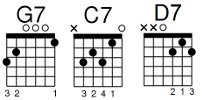
Work on playing these chords and practice alternating between two chords. The following guitar chord exercises will help you learn these chords and get you playing some common chord progressions.
See you there.
5 Pack Case of Hohner Special 20s
What do I like about the Special 20s?
Great Sound, Smooth Comb, Responsive to Bending - but not loose, Affordable. I play Special 20s more than any other model.
Hohner Harmonica Holder
The Hohner Harmonica Neck Holder fits harmonicas up to 7-1/2" long, has a nickel plated finish and fits any neck shape.
I have used a similar holder for over 25 years. This no-nonsense holder will work for you.
Martin Acoustic Guitar Strings
If it's been a while since you've changed your strings, you won't believe the difference in the sound. These are some excellent Martin strings. Need I say more? Totally affordable.


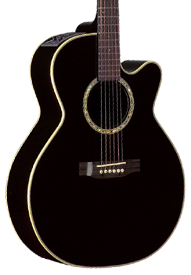

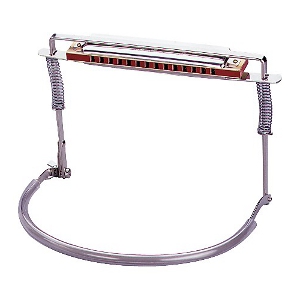

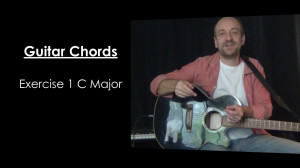
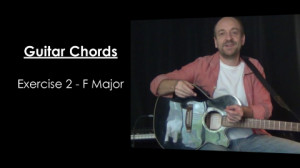

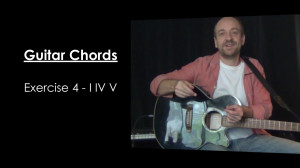
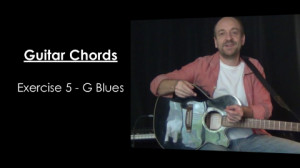
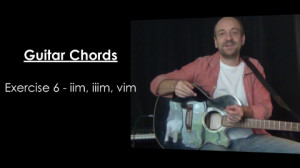
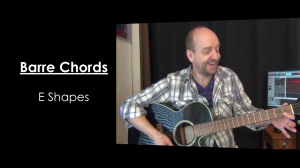
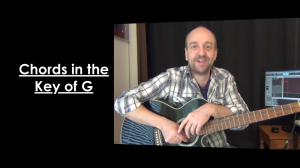
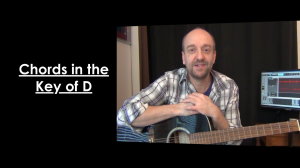
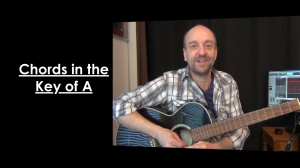
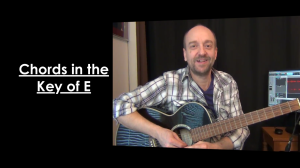


Looking at some of these videos, is it the case that in all major keys that the i,iv and v are major chords and the ii,iii and vi are minor chords and the vii is….. something else? Diminished usually?
Hi Richard,
That is it exactly.
When you are in a major key, the three note triad chords are I Maj, ii min, iii min, IV Maj, V Maj, vi min, vii dim.
I, IV, and V are major. ii, iii and vi are minor and vii is diminished
A song doesn’t have to stay within it’s key but usually stays pretty close.
Thanks for the question.
Cheers,
George
Dear mr. George Goodman,
Thank you for the guitar lessons. I still have to learn a lot, which will take lots of time.
Thanks again,
Paul van Sonderen
Hi Paul. You’re welcome. Have fun with the playing.
Peace,
George